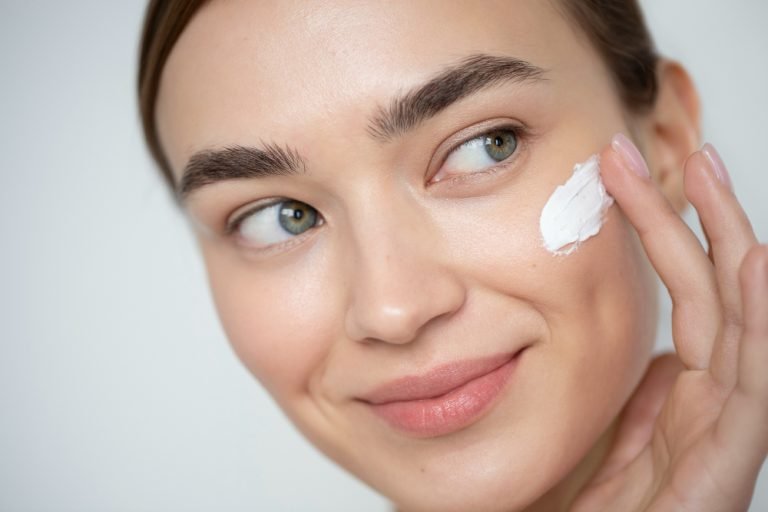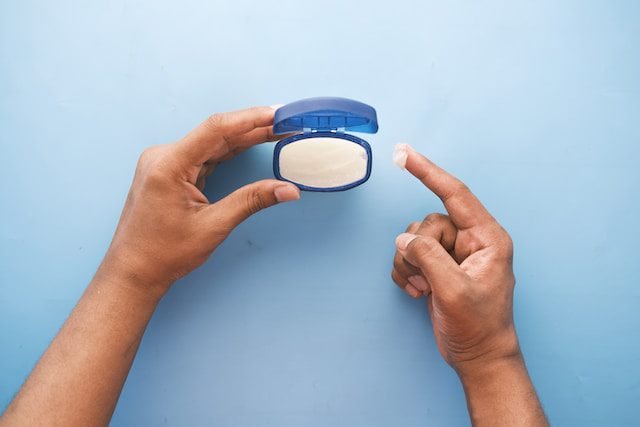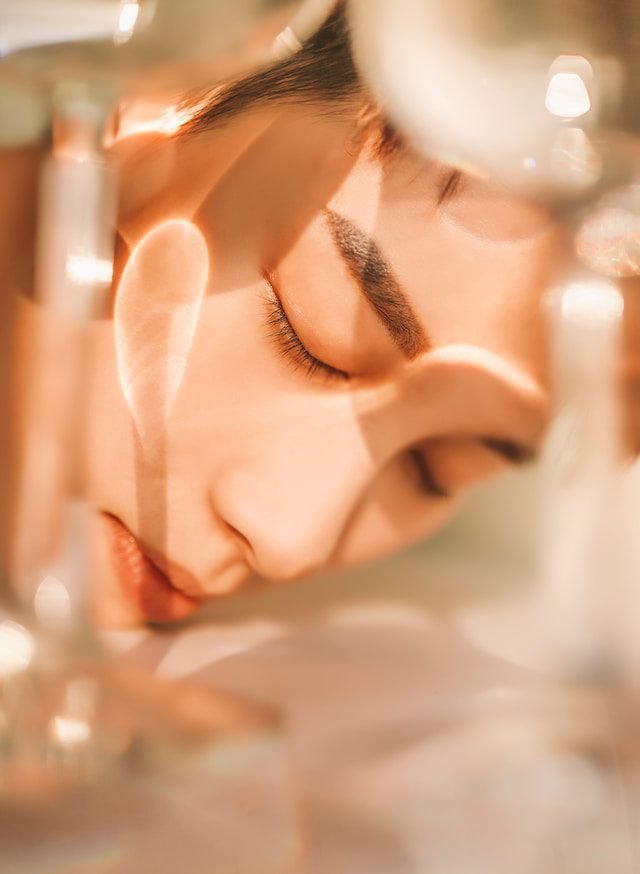Tretinoin (Retin A) is a dermatologist-recommended product that is known for its ability to fight skin aging and many common facial skin problems. When used correctly, it can offer a wide range of benefits to the skin.
However, as with any skincare treatment, it is important to use complementary products to enhance the results and avoid potential negative effects. One type of product that is particularly beneficial when used with tretinoin is a serum.
In this blog post, we will discuss the best serum to use with tretinoin and provide tips on how to incorporate tretinoin into your skincare routine for maximum effectiveness.
The Best Serums to Use with Tretinoin
When using tretinoin, it’s important to keep the skin hydrated to minimize dryness and irritation. It’s important to avoid products that contain alcohol or other harsh ingredients that can strip the skin of its natural oils. Look for products that are specifically formulated for sensitive or dry skin types and avoid products with fragrances or other potential irritants.
1. Hyaluronic Acid Serum
Hyaluronic acid is a hydrating ingredient that helps to plump and moisturize the skin. When used with Tretinoin, it can help to reduce irritation and improve skin texture. A popular product in the market is The Ordinary Hyaluronic Acid 2% + B5.

2. Azelaic Acid Serum
Azelaic acid is a gentle exfoliant that can help to reduce the appearance of acne and hyperpigmentation. It is also known to have anti-inflammatory properties, making it a great option to use with tretinoin. The Ordinary Azelaic Acid Suspension of 10% is a popular choice amongst many.

3. Niacinamide Serum
Niacinamide is a vitamin B3 derivative that helps to regulate oil production and reduce inflammation. It can also help to improve skin texture and reduce the appearance of pores. Try Paula’s Choice 10% Niacinamide Booster.

4. Rosehip Oil Serum
Rosehip oil is a natural ingredient that is high in essential fatty acids and antioxidants. It can help to improve skin hydration and reduce the appearance of fine lines and wrinkles. A popular rosehip oil serum is the Trilogy Certified Organic Rosehip Oil.

5. Peptide Serum
Peptides are amino acid chains that can help to improve skin elasticity and firmness. They can also help to reduce the appearance of fine lines and wrinkles. The Inkey List Peptide Moisturizer is loved by many who swear by it.

| Serum | Benefits | Recommended Product |
|---|---|---|
| Hyaluronic Acid | Hydration, reduces irritation, improves texture | The Ordinary Hyaluronic Acid 2% + B5 |
| Azelaic Acid | Gentle exfoliation, reduces acne and hyperpigmentation, anti-inflammatory | The Ordinary Azelaic Acid Suspension 10% |
| Niacinamide | Regulates oil production, reduces inflammation, improves texture and pore appearance | Paula’s Choice 10% Niacinamide Booster |
| Rosehip Oil | Hydration, reduces fine lines and wrinkles | Trilogy Certified Organic Rosehip Oil |
| Peptide | Improves elasticity and firmness, reduces fine lines and wrinkles | The Inkey List Peptide Moisturizer |
How do you use tretinoin with other serums?
When using tretinoin along with other serums, it’s important to be cautious and follow some guidelines to avoid potential skin irritation or adverse reactions. Here are some tips for using tretinoin with other serums:
- Introduce one product at a time: If you’re new to tretinoin or any other serums, it’s advisable to introduce them into your skincare routine gradually. Start by using tretinoin alone for a few weeks to allow your skin to adjust before adding other serums.
- Consult with a dermatologist: It’s always a good idea to consult with a dermatologist or skincare professional before combining different products. They can provide personalized advice based on your skin type, concerns, and the specific serums you want to use alongside tretinoin.
- Wait after applying tretinoin: Tretinoin is typically applied as part of a nighttime routine. After cleansing your face, wait for at least 20 to 30 minutes to allow your skin to dry completely before applying other serums. This waiting period helps minimize the risk of irritation or interactions.
- Apply serums in the correct order: When applying multiple serums, the order of application is crucial. Generally, it’s recommended to apply serums in order of their consistency, starting with the thinnest and ending with the thickest. For example, water-based serums should be applied before oil-based serums. Refer to the specific instructions provided by each product for the most accurate guidance.
- Patch test new products: Before using any new serum in combination with tretinoin, it’s wise to perform a patch test. Apply a small amount of the serum to a discreet area of your skin (like the inner forearm) and observe for any adverse reactions over 24 to 48 hours. If there’s no irritation or redness, it’s generally safe to proceed with using the serum alongside tretinoin.
- Monitor your skin’s reaction: Pay close attention to how your skin responds to the combination of tretinoin and other serums. If you experience excessive dryness, redness, peeling, or any other signs of irritation, consider reducing the frequency of product application or temporarily discontinuing one of the serums. If the irritation persists or worsens, consult a dermatologist.
Remember, everyone’s skin is unique, so what works for one person may not work for another. It’s essential to listen to your skin’s needs and adjust your skincare routine accordingly.
Ingredients to Avoid when using tretinoin
While there are certain ingredients that can work well with tretinoin, there are others that should be avoided to prevent irritation and potential side effects. Here are some ingredient combinations to avoid when using tretinoin:
1. Benzoyl peroxide
This ingredient is often used to treat acne, but it can be too harsh when used in conjunction with tretinoin. The combination can lead to increased dryness, peeling, and irritation.
2. Alpha hydroxy acids (AHAs) and beta hydroxy acids (BHAs)
These ingredients can be beneficial for exfoliating the skin and treating acne, but they can also cause irritation and dryness when used with tretinoin. If you do use these ingredients, it’s best to space them out from your tretinoin application or use them in a lower concentration.
3. Vitamin C
While vitamin C can be a powerful antioxidant and brightening ingredient, it can also be too irritating when used with tretinoin. If you do want to use a vitamin C product, it’s best to use it in the morning and space it out from your tretinoin application at night.
4. Retinol
While both tretinoin and retinol are forms of vitamin A and can provide similar benefits to the skin, it’s best to avoid using them together. This is because using them together can cause irritation and increased sensitivity.
Is it OK to use serum while using tretinoin?
Yes, it is generally okay to use a serum while using tretinoin. However, it’s important to choose the right serum and follow a proper skincare routine to avoid any potential irritation or adverse reactions.
What skincare products work best with tretinoin?
Skincare products that work best with tretinoin are those that are gentle, hydrating, and free of potential irritants. This includes products like gentle cleansers, hydrating toners, and moisturizers that contain ingredients like ceramides, hyaluronic acid, and niacinamide. It’s important to use products that are suitable for your skin type and to avoid harsh or abrasive products that can further irritate the skin.
Do you put tretinoin before or after the serum?
It’s generally recommended to apply tretinoin before applying serum. This is because tretinoin is a topical medication that needs to be absorbed directly into the skin, while serums typically contain a blend of active ingredients that are designed to penetrate and hydrate the skin.
However, it’s important to follow the specific instructions provided by your dermatologist or healthcare provider, as they may recommend a different application order based on your individual needs and skincare routine.
Conclusion
Using the right skincare products with tretinoin can make a significant difference in the effectiveness of the treatment and the overall health of your skin. It is important to avoid certain ingredient combinations and follow a proper skincare routine that includes hydrating toners and serums to support the skin barrier.
Also, knowing how to layer products correctly can help maximize the benefits of tretinoin without causing irritation or dryness. By following these tips and working with a dermatologist, you can achieve healthy, youthful-looking skin with the help of tretinoin and other compatible skincare products.





